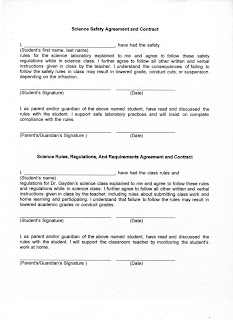Wednesday, 29 August and Thursday, 30 August; Friday, 31 August and Tuesday, 4 Septermber, 2007

DUE TO SCIENCE FCAT PRESTESTING, THE LESSONS PRESENTED HERE WILL SPAN A FOUR DAY PERIOD.
Using information from classroom discussions, handouts, and hands-on activities,
Students should be able to:
-demonstrate the steps of the scientific process by modeling an activity.
-identify variables and controls.
-formulate a hypothesis based on observations.
-test a hypothesis for its validity.
-analyze data and draw conclusions.
Students answered an FCAT question for their do now: The question was:
People used to believe that rotting meat would produce flies. Francesco Redi performed an experiment that showed this theory to be false. Dead matter did not produce living matter. What factor caused people to believe that flies came from rotting meat and what can be concluded from this?
After discussion, we completed any Cornell notes on scientific process/lab safety. Students are reminded that they must summarize their notes AND ask 3 questions based on the note's contents as a part of their nightly study routine. Students should use highlighters as a tool to help study by highlighting groups of material that are related or using color to mark answers to their questions.
After collection and review of HL #4, students received HL #5 on Variables. We read and recorded notes, including discussion on the types of variables, and the difference between controls and constants. HL #5 can be found at the top of this blog. Students received any missing handouts. They are reminded to bring all handouts to class for completion of the interactive notebook next block class meeting.
Students then demonstrated the art of scientific process by dong a string activity.
























